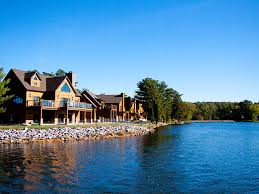With my son heading today to the Midwestern vacation hot spot Wisconsin Dells, it seems like a good time to check on the condition of one of that area’s biggest attractions: Lake Delton.
For over 60 years this lake, which is home to Tommy Barlett’s wildly popular water shows, has been a flagship tourist draw to The Dells. Beaches and condominiums line the 250-acre man-made lake, the primary inflow for which is Dell Creek; with an outflow to the Wisconsin River.
But the lake is not without its problems. With an average depth of just 10 feet, and only about 20 feet at its deepest point, Lake Delton has algae problems. So much so, that lake area residents and the Village of Lake Delton in 2012 approved injecting blue dye into the lake, to make it prettier for residents and tourists alike.
Ahhh, the benefit of tourist dollars and sizable resources.

Well, the question begs, doesn’t it? If Lake Delton can struggle with toxic algae, what chance do other small and shallow lakes have?
Not that bad, it appears.
In this excellent article on shallow lakes ecology, by Dwight Osmon — a Water Research Planner for ecology engineering firm Hey and Associates — there are some rules of thumb to follow that give shallow lakes a chance to be cleaner and more naturally viable for people, plants and fish alike.
Promoting native plant life at the bottom of a shallow lake appears to be key.
Here is some of what Osmon presents as a multi-pronged solution:
- Make an effort to, ironically and when applicable, lower the water level of the lake to permit sunlight to reach the lake bottom, and facilitate plant growth.
- Eliminate carp via commercial fishing, and the introduction of predatory game fish such as Walleye and Pike.
- Create larger no-wake zones to reduce wave activity — or eliminate the wake activity from boats altogether.
- Control nutrient loading into the lake from sources such as farms and residential properties.
Osmon emphasizes that these approaches work best when implemented simultaneously. Certainly, together they represent a better option than adding blue dye.
